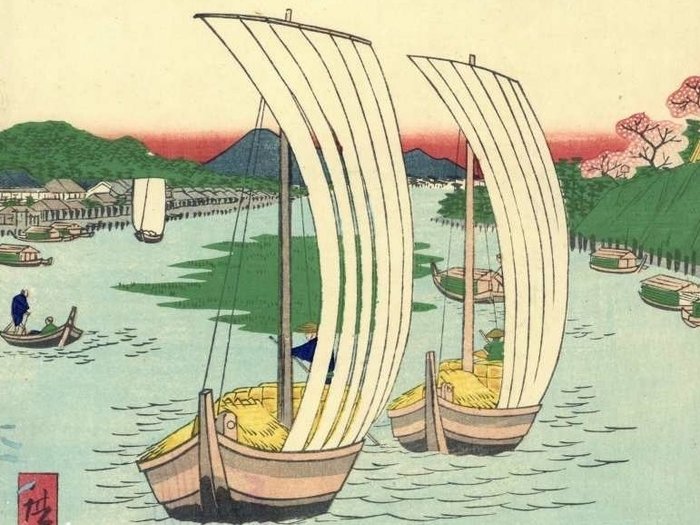
Actors Iwai Kumesaburō III as Oyone and Bandō Hikosaubrō IV as Magoshichi - 1847-52 - Utagawa Kunisada (1785-1865) - 日本 - 江戶時代(1600-1868)
編號 82748027

編號 82748027

Original woodblock print - Paper - Utagawa Hiroshige III (1842–1894) - 'Sumida dutsumi no yuukei' 隅田堤の夕景(Evening) - From the series "Tokyo meisho zue" 東京名所図会 (Evening view of Sumidadsutumi) - Japan - 1868 (meiji 1 period)
This Ukiyo-e is made by Utagawa Hiroshige III in 1866 (Keio 2)
This Ukiyoe series drawn famous places in Tokyo.
This Ukiyo-e has many series.
Reasonable condition, bottom and right margins trimmed, holes on the margins, color 'bleeding' around the signature cartouche
See Museum of Fine Arts, Boston: https://collections.mfa.org/objects/537164
memo
Utagawa Hiroshige III is known for drawing “Tokaido Gojusantsugi,” as well as Utagawa Hiroshige and Utagawa Hiroshige II.
Reflecting the advent of the Meiji period, however, he drew many products of civilization and enlightenment, such as steam locomotive, Western-style architecture and Western clothesHiroshige’s name is known to the world for drawing “Tokaido Gosho Sanji” as well as the first and second generations, but he created the work reflecting the Meiji era. He actively portrays the state-of-the-art technology of the time, including steam locomotives, steamships, railroads, Western-style architecture, clothes, mage-cut people, and rickshaws. Among them, the appearance of the railway connecting Shimbashi and Yokohama, which opened in 1872, caused a culture shock because it was said that iron wheels would run on steam at that time.The nishiki-e paintings drawn by ukiyo-e artists from locomotives and steamships that they had never seen before became news all over the country. Hiroshige III drew this kind of civilization with a lot of imported aniline red, which is a deep red color, so his kaika-e was called “Aka-e”. It can be said that he was a perfect reflection of the restless and noisy world of the time. The kaika-e of Hiroshige III has nothing to do with the lyricism of Hiroshige III, but it conveys the color of the early Meiji era. He also draws many such kaika-e paintings, as well as paintings of scenic spots in Tokyo and products of various countries.
This Ukiyo-e has many series.